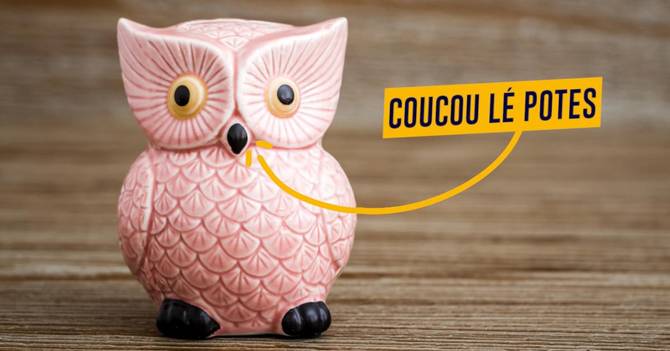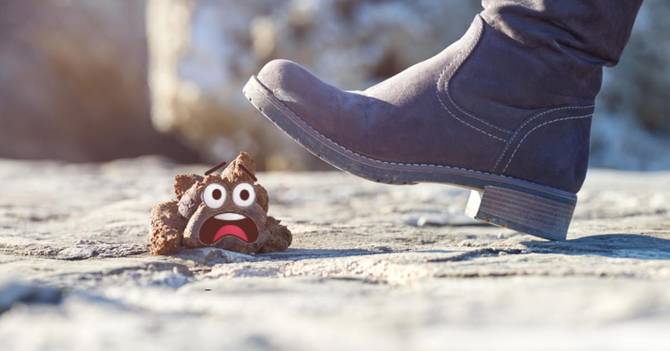“Don’t worry, it’s good luck!” », Your friend repeats to you mechanically each time you gracefully crush a dog turd, or a ladybug decides to hover around you for hours. But where do these beliefs come from? Since when ? Since what event? We’re trying to figure it out! Happy Friday the 13th.
4 leaf clover
If found BY CHANCE (and not by raking 12 hectares of land with a fine-tooth comb), the 4-leaf clover brings good luck. The hypotheses of origins to this superstition are plural.
For Christians, each of the four leaves has a positive meaning: hope, faith, charity and luck. The legend also says that Eve would have found one in the Garden of Eden, after being driven out, in order to remember the wonderful life she could have had, but which she definitively lost. ATMOSPHERE.
In the pagan version, the leaves represent fame, wealth, love and health.
Finally, according to the most Cartesian version, the lucky four-leaf clover since there would only be a 1/10,000 chance of finding one.
Horse Shoe
Again, one superstition = many hypotheses as to its origin. One of the most famous remains that of Dunstan, blacksmith, who is said to have caused harm to the devil. The story is as follows: one fine day, he is visited by a somewhat original man, who has clogs instead of feet, and who asks him to shoe them (normal). Quickly, he identifies him as Satan, and decides to comply, taking care to make the horseshoes particularly painful and unbearable. Satan then begs him to get rid of it. He makes her swear never again to approach a horseshoe, otherwise he will leave her these objects of torture savagely hung. Satan swears, and the horseshoe then becomes a sign that evil is afar off.
In Celtic tradition, it is believed that fairies and evil spirits cannot stand the touch of iron. Result, horseshoe = evil spirits at a distance.
In short, the hypotheses are going well. The only thing we can confirm is that carrying around a horseshoe in your purse will cause you more scoliosis than anything else. Everyone has their own notion of happiness, after all.
The owl
In Japan, “owl” is called “fukurô”, synonymous with “repelling misfortune” / “attracting happiness”. The owl is great, but the statuettes of owls placed on the chest of drawers in the decorative entrance hall are still really ugly. Let’s be honest.

The ladybug
In France, they are nicknamed “good god beast”, in Germany, they say “gluckskaefer”, which literally means “lucky bugs”. This rather cool beast status dates back to the 10th century. When a man was (unfairly) sentenced to death for a murder, a ladybug saved him. On the day of the execution, a ladybug landed several times on the condemned man’s neck, when the executioner was to cut off his head. As soon as it was chased away, it immediately returned to land in the same place. King Robert II then saw divine intervention there, and made the decision to pardon the man. A few days later, the real murderer was found! Since this story, the ladybug is considered a lucky charm (you surprise me).
Walk in dog poop (but with the left foot)
In fact, walking in poop is boring (literally). But there’s always a joke to tell you “but it’s going aaaaa, it’s lucky! “. This idea of lucky poo comes from the 19th century. At the time, we went to the theater in a horse-drawn carriage. The car parks are therefore full of horses, and their excrement. Spectators happily walk in it, then rot the floor of the performance hall. Result: the more horse poop it whips, the more people there are in the room, the more good news it is! As for the left foot, it is because the left is the symbol of betrayal. By plunging it into good dung, you humiliate evil. It’s very symbolic. Moving, right?

Rabbit’s Foot
Since the Celtic world, the rabbit’s foot has been an international lucky charm. At the time, rabbits were credited with the ability to dig very deep in the ground. So deep that they were thought to be able to make contact with the spirit world. The rabbit’s foot thus made it possible to ward off evil spirits. It remains ultra-glaucous as grigri.
The number 7
The number 7 is associated with luck in many cultures. For the Greeks, it was THE perfect number, since the sum of the sides of a triangle (3) and that of the sides of a square (4) was equal to 7. However, for them, these two shapes were perfect. More generally, the number 7 is found in several aspects of daily life: the 7 days of the week, the 7 colors of the rainbow, and above all: the game of 7 families.
The Nazar Boncuk
The “Nazar Boncuk” comes from Turkey. It represents “the evil eye” or the envious and jealous gaze of others, and in this way, it acts as a bulwark against them. Belief in this “evil eye” is cited in particular in the Old Testament, but also in the Koran, and therefore echoes within the three great monotheisms. On the Judeo-Christian side, we can read in particular “From within, from the hearts of men, come evil thoughts, fornications, thefts, murders, adulteries, covetousness, wickedness, deceit, fornication, evil eye, insults, pride, folly” (Mark 7. 21, 22). The symbol of the eye is even older than that: in ancient Egypt, the eye of Horus was painted on tombs to bring good luck to the souls of the deceased.
Throw a coin in the Trevi fountain
Many tourists throw a coin into the Trevi fountain, with their backs to it (in 2016, 1.4 million euros of tunasses were fished out of the fleet). Rome being considered “the eternal city”, this gesture was formerly associated with the payment of a tribute for access to eternal life.
Same story (more or less) from the side of Greek mythology: the Acheron, the river that separates the world of the living from that of the dead, is the river of the underworld. In order for their loved ones to gain paradise, the families of the deceased did not hesitate to “pay Charon” (the ferryman of souls). According to beliefs, not paying this debt condemned the deceased to 100 years of wandering on the banks of the Styx. In short, instead of throwing your money out the window, throw it in the fleet!
The dream catcher
Favorite symbol of bohemian chic festivals, the dream catcher is also and above all an ancient amulet! They are the Ojibwe people, a group of natives of North America. Initially, they make them to protect infants from evil spirits, which would come in the form of a nightmare. They also believed that, during our sleep, we were more susceptible to being affected by negative energies. If they have this appearance, it is because they refer to Asibikaashi, the “spider woman”, Goddess protector of children.

We want to give thanks to the author of this article for this awesome web content
Top 10 explanations of lucky charms, objects that make you lucky
Take a look at our social media accounts as well as other related pageshttps://nimblespirit.com/related-pages/
